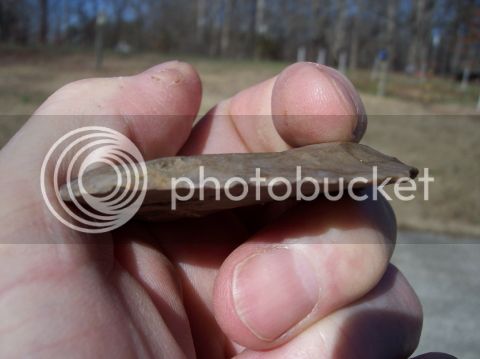Interesting that this topic came up; I was walking in one of the local public land areas a couple of days ago. This area has more flint in it than any place I have ever been, nodules as big as a car hood are in the creek, the bedrock of the creek is solid flint as well.
Naturally there are flint chips littering the hiking trails, in some places they are solid from the flint factories of NAs in the past.
I looked down on the and saw a flake that I thought would make a gun flint so I picked it up and put it in my pocket. I got home and noticed the edge had been sharpened, my flint chip was a knife. I have found dozens of similar ones, all perfectly shaped to fit ergonomically in one's hand.

Naturally there are flint chips littering the hiking trails, in some places they are solid from the flint factories of NAs in the past.
I looked down on the and saw a flake that I thought would make a gun flint so I picked it up and put it in my pocket. I got home and noticed the edge had been sharpened, my flint chip was a knife. I have found dozens of similar ones, all perfectly shaped to fit ergonomically in one's hand.






